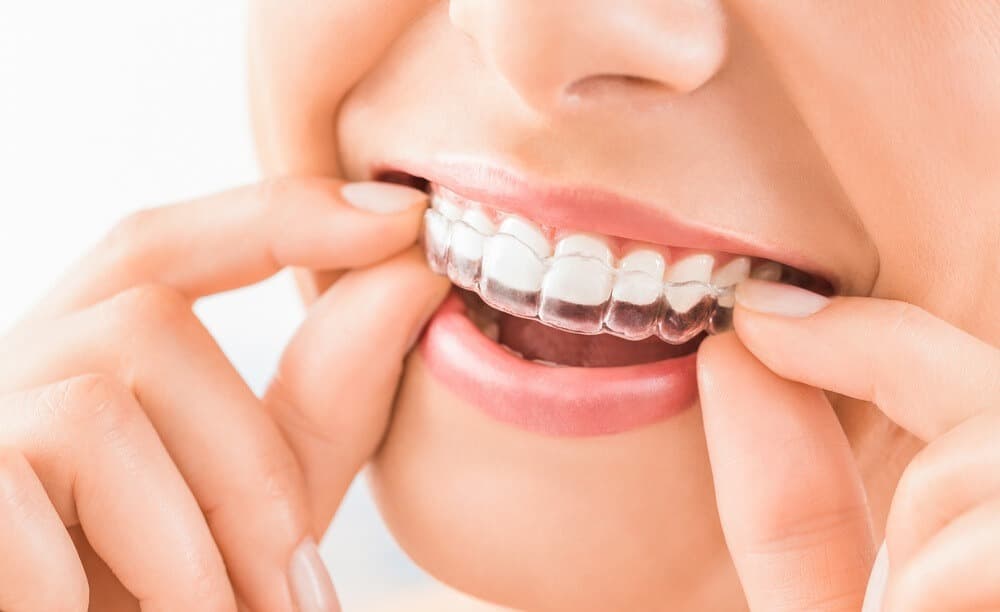
Clear aligners are an orthodontic tool used to straighten teeth and can often be used instead of a brace. You may have seen them advertised on TV or online, as some providers will offer them directly to patients without using local dental clinics.
Even in clinics where clear aligners have been available for about 10 years, we are seeing more use of clear options over traditional brace use. If you do need orthodontic work, should you wear an aligner or a brace? How do the two treatment options compare?
Aesthetics of the treatment; during and after
The clear aligners are often called invisible braces, which is used to get across the idea that it works as a brace but cant been seen. This is a half-truth, the aligners available by Invisalign in Bromley are very thin, light and translucent, making them as close to invisible as possible but the way they re-arrange teeth is quite different. A standard brace applies pulling force to a tooth from the archwire to the brace, which is glued to the middle centre of the tooth. The aligners have contact points across the tooths front, back and upper surfaces allowing them to push on them from different angles. This, along with the smarter application of force, allows more tooth movement with less force and therefore less discomfort.
This alone is enough for most patients to adopt clear aligners over braces. The awkward brace wearing phase associated with adolescents can be avoided, and among adult working professionals the idea of using a metal brace is distasteful, once again heightening the popularity of clear alternatives.
How do aligners feel?
Patients with complex orthodontic conditions who have experienced using both aligners and regular braces consider aligners less painful and easier to eat with.
This is mostly to do with the adjustments that are made to braces; brace adjustments are made by an orthodontist usually every 6 weeks but each aligner is only worn for two weeks. These smaller and more regular adjustments, along with the more forgiving plastic resin of the aligner compared to the rigidity of metal braces, make the latter more tolerable. With braces, users often have to take paracetamol and eat softer food for several days after adjustments, but with aligner users reporting not having to alter their food choices or use pain relief.
Clinical effetiveness
The clinical effectiveness of braces is very well established with more than a hundred years of use in dentistry. The clear aligners have less than 20 years but have shown themselves to be effective when applied correctly. One of the biggest issues in determining the effectiveness of aligners is their possible misuse. Braces have always only been available in clinics provided by fully licenced dental professionals, but aligners are available in at-home kits. Without the guidance of a dentist, it seems the success rate of the at-home kits is significantly lower than clear aligners used with the oversight of a local clinic.
In concussion or TLDR
Aligners are not always appropriate; if your condition involves altering the position of molars or changes to your palate size, braces are the only effective treatment. If clear aligners are appropriate for you, they are more comfortable, less disruptive and are just as effective.
